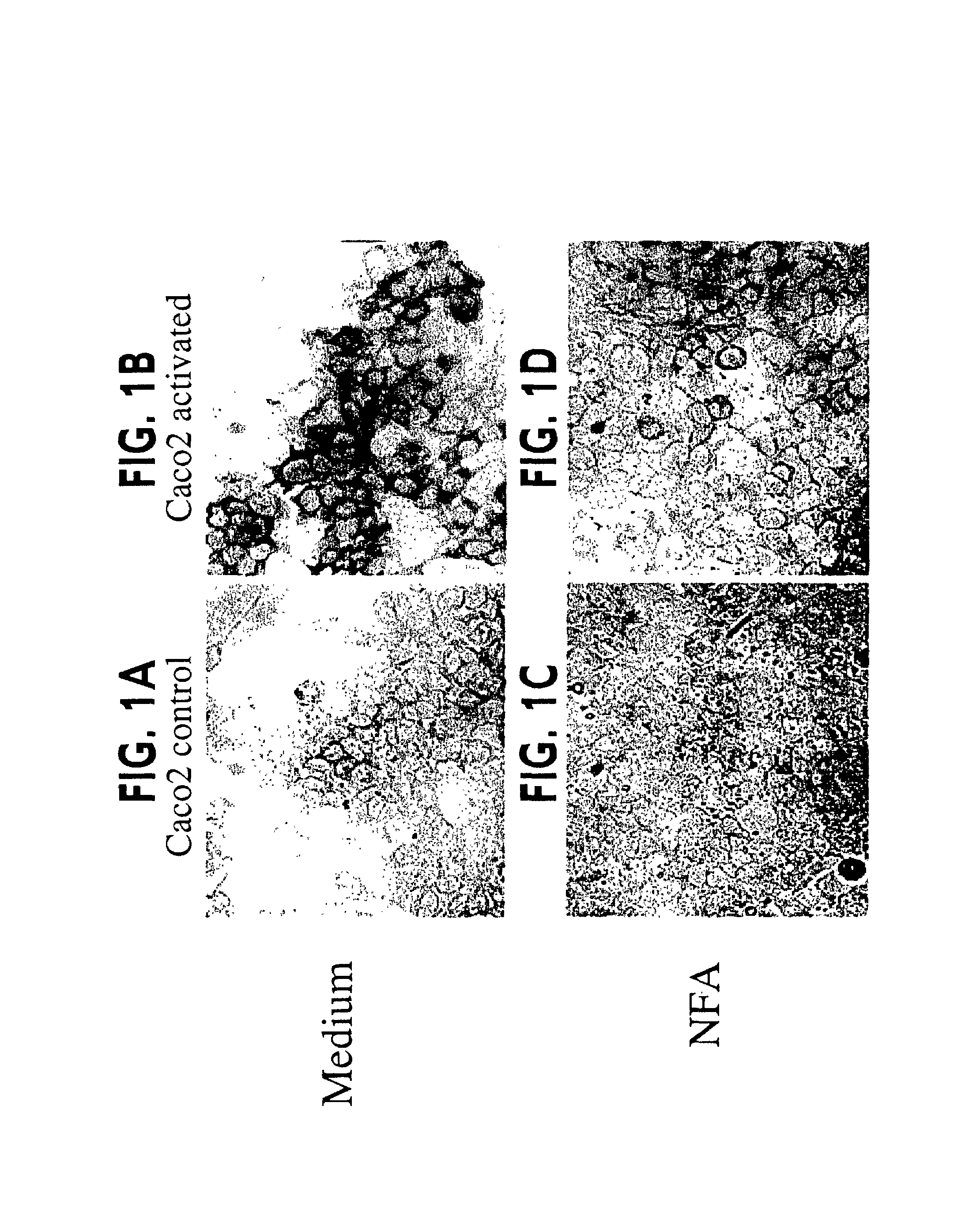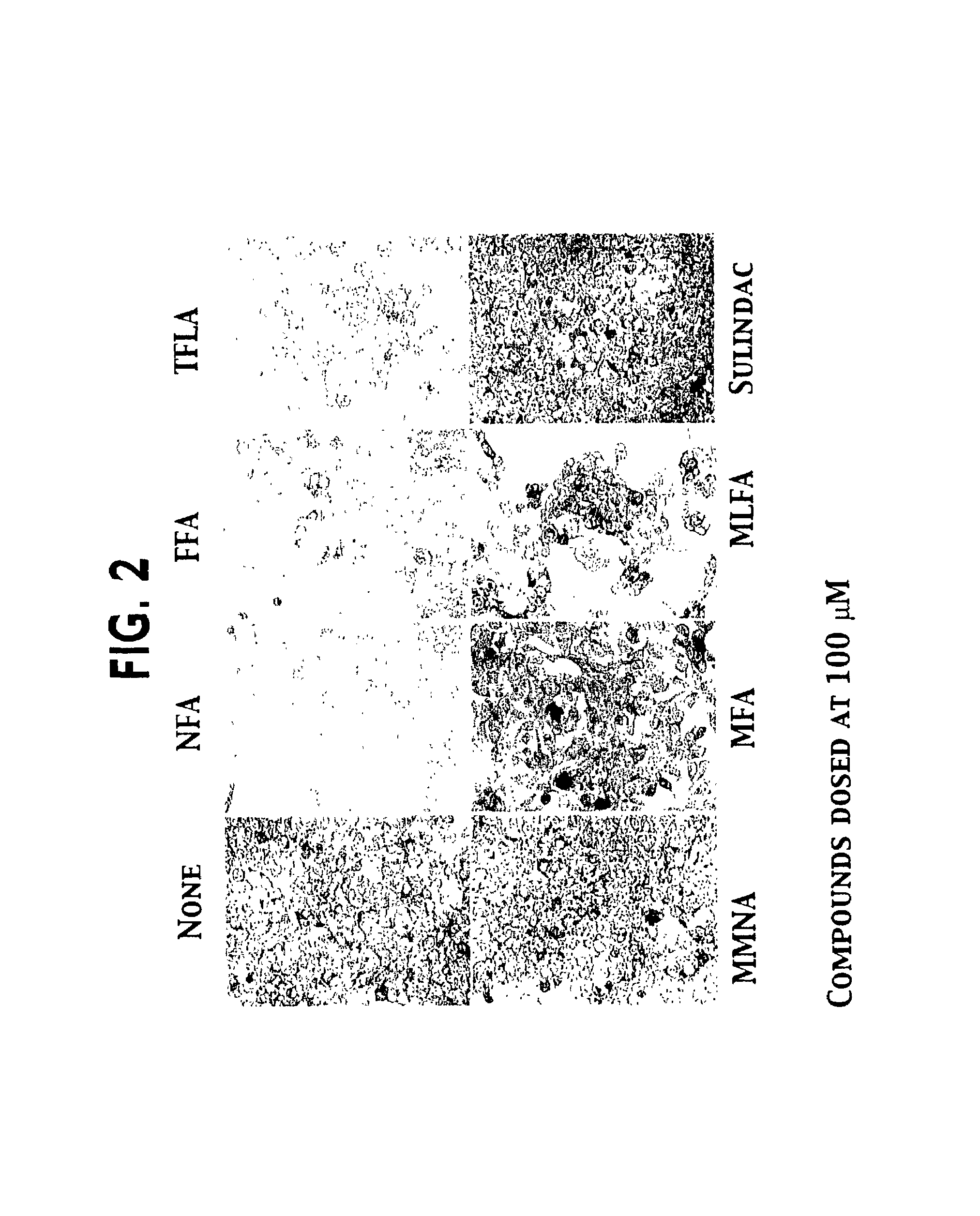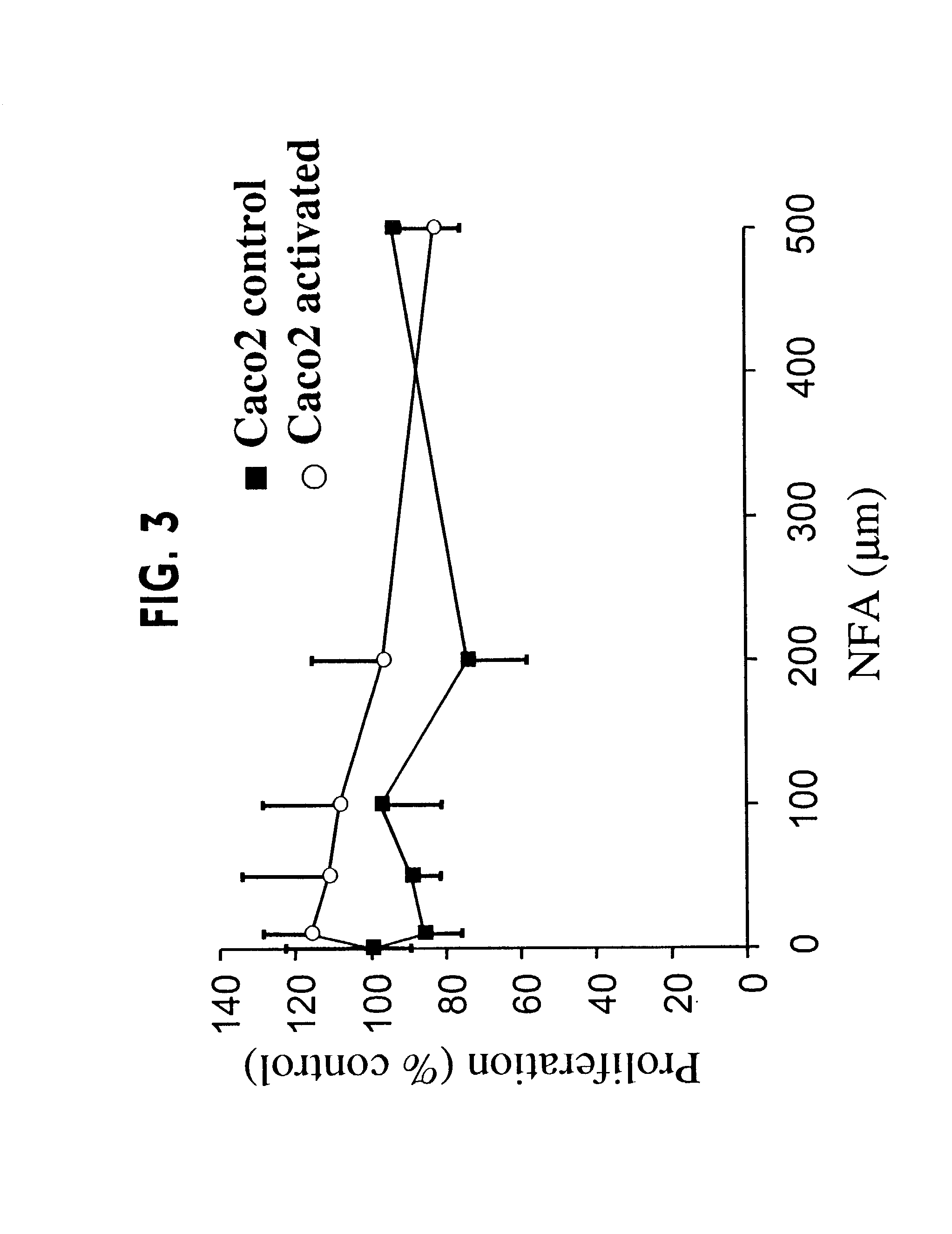Mucin synthesis inhibitors
a technology of mucin and inhibitors, applied in the field of modulating mucin synthesis, can solve the problems atelectasis which is often complicated, and mucus plugging, etc., to reduce the efficacy and safety, and reduce the effect of mucin synthesis or mucus over-production
- Summary
- Abstract
- Description
- Claims
- Application Information
AI Technical Summary
Benefits of technology
Problems solved by technology
Method used
Image
Examples
synthesis examples
Example 1
Synthesis of Mucin Synthesis Inhibitors from Anthralic Acid or 2-Amino Nicotinic Acid
[0185]The preparation of this class of mucin synthesis inhibitors was accomplished by the following scheme:
[0186]
Example 2
Synthesis of the C, O and S Analogues of Formula II Mucin Synthesis Inhibitors
[0187]The preparation of this class of mucin synthesis inhibitors was accomplished by the following general scheme. Differing primarily in the preparation of the β-keto phosphonate. For the analogues containing diaryl amine, the cyclic anhydride was prepared. Attempts to prepare the phosphonate directly from the methyl ester gave relatively poor results. The yields were variable and poor. The preparation of the phosphonate from the isatoic anhydride gave improved results. For other diarylether and thioether analogues the methyl ester yielded satisfactory results.
[0188]The general synthetic scheme for these compounds is as follows:
[0189]
Example 3
Preparation of the B-Keto Phosphonate
[0190]The ani...
example 1
NFA Inhibits Mucin Production by Caco2 Cells Activated to Over-Produce Mucin
[0196]Activated Caco2 cells that express the mRNA of MUC1, MUC2, MUC3, MUC4, MUC5B and MUC5AC have been produced and used to test for inhibitors of mucin production. These cells can be stained for mucin using Periodic Acid-Schiff staining (PAS). As shown in FIG. 1, although Caco2 control cells displayed a basal PAS staining with a few small glycoconjugates vesicles scattered about (panel A), activation of the Caco2 cells dramatically increased the number and intensity of PAS positive mucin glycoconjugates (panel B). The activated Caco2 cells were cultured in the presence of niflumic acid (NFA) or 4,4′-diisothiocyanostilbene-2,2′-disulfonic acid (DIDS). At the indicated concentrations (100 μm for NFA and 300 μm for DIDS), PAS staining of inhibitor treated activated Caco2 cells revealed significantly fewer positive staining mucin glycoconjugates as compared with the untreated cells (FIG. 1D compared to 1B). In...
example 2
NFA Inhibits Eotaxin Production by Caco2 Cells Activated to Over-Produce Mucin
[0197]Activated LHL4 cells that express and secrete eotaxin have been produced and used to test for inhibitors of eotaxin production. These cells were assayed in vitro for eotaxin by an ELISA technique well known in the art (R&D Systems). As shown in FIG. 4, activated LHL4 cells were cultured in the absence (control) or presence of increasing concentrations of niflumic acid (NFA). Significant inhibition of eotaxin production was noted with increasing concentrations of NFA. Similar inhibition was seen with DIDS and SIDS in an identical experiment. Mad / C3 cells show similar inhibition of eotaxin production by NFA, DIDS, and SIDS. Taken together, these results clearly demonstrate a direct effect of NFA on eotaxin production.
PUM
| Property | Measurement | Unit |
|---|---|---|
| temperature | aaaaa | aaaaa |
| temperature | aaaaa | aaaaa |
| concentration | aaaaa | aaaaa |
Abstract
Description
Claims
Application Information
 Login to View More
Login to View More - R&D
- Intellectual Property
- Life Sciences
- Materials
- Tech Scout
- Unparalleled Data Quality
- Higher Quality Content
- 60% Fewer Hallucinations
Browse by: Latest US Patents, China's latest patents, Technical Efficacy Thesaurus, Application Domain, Technology Topic, Popular Technical Reports.
© 2025 PatSnap. All rights reserved.Legal|Privacy policy|Modern Slavery Act Transparency Statement|Sitemap|About US| Contact US: help@patsnap.com



